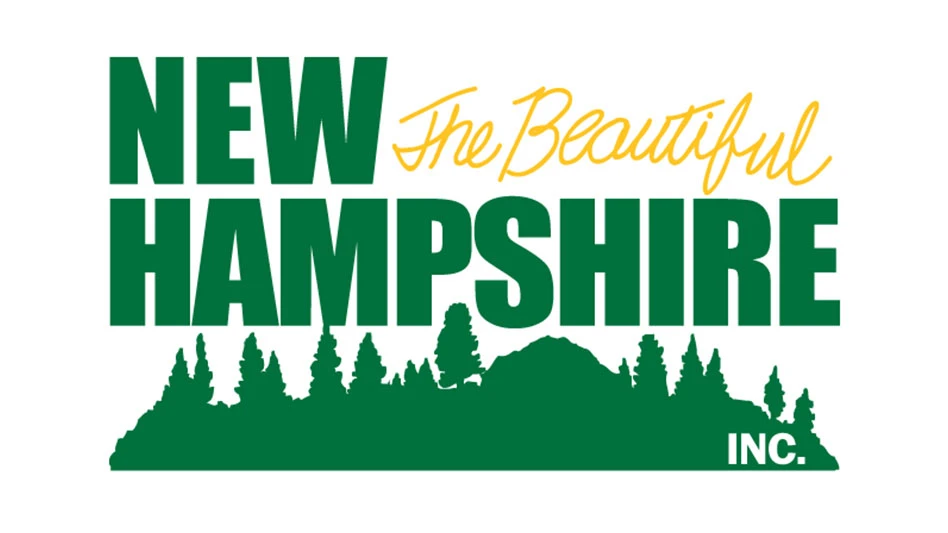 Converting a packaging material from “difficult to recycle” status to “commonly recycled” has been the difficult task undertaken by the Carton Council, Vernon Hills, Ill.
Converting a packaging material from “difficult to recycle” status to “commonly recycled” has been the difficult task undertaken by the Carton Council, Vernon Hills, Ill.
The Carton Council is a consortium of four carton packaging manufacturers (EloPak, Evergreen Packaging, SIG and Tetra Pak) that has acknowledged the historically low recycling rate for paper beverage cartons in the United States and has put together a plan to change that pattern.
According to Jim Frey, a consultant who is helping the organization undertake its long-range plan, Carton Council members are committed to increasing the recyclability of cartons and are doing so in a comprehensive fashion that addresses end market stability as well as collection results.
As of the first half of 2012, Frey says Carton Council member companies are “really excited about what has happened so far, and they also are excited that they still have years ahead of them to keep doing this.”
What has happened so far has included arrangements with about 10 paper mill locations in North America to accept recycled cartons as feedstock and the growth of U.S. household access for carton recycling, which has increased from 17 percent in 2007 to more than double that in 2011 at 35 percent.
Mill Options
Results of past endeavors to increase the recycling rate of a material have shown that it can do more harm than good to increase collection without first establishing stable end user markets.
The Carton Council effort thus considered it Step 1 of its plan to “build sustainable markets,” according to presentation materials used by Frey and others when representing the Carton Council.
In Step 1, the Council has moved to:
- Identify suitable North American mill partners;
- Negotiate agreements with mills to buy cartons at prices that drive collection and sorting; and
- Develop broker ties to move supply to markets.
The average beverage carton, according to the Carton Council, contains “about 80 percent paper and 20 percent polyethylene.” Aseptic cartons are more likely to be composed of 74 percent paper, 22 percent polyethylene and 4 percent aluminum.
Neither form of carton contains wax, the Carton Council notes, meaning this form of coating that is unwelcome at paper mills is not a consideration.
The boxboard used in cartons is “high-value material,” according to the Carton Council, containing “100 percent virgin fibers” and “no ink.” Thus it is “some of the best fiber still in the waste stream” and offers a high yield for mill operators, the Carton Council says.
Post-consumer cartons have long been used in other parts of the world, with some 140 mills worldwide accepting them as feedstock.
|
A Familiar Name Aseptic carton manufacturer Tetra Pak North America, Vernon Hills, Ill., has announced that Jason Pelz has joined the company as vice president of sustainability and recycling programs. Pelz hails from a family with a long-time presence in the recycling industry in the Upper Midwest. (See the feature story “Reaching Out,” which can be found in the www.RecyclingToday.com back issue archives in the Oct. 2001 Paper Recycling Supplement section.) He will be responsible for advancing the company’s sustainability and recycling strategies throughout the United States and Canada. Pelz, with close to 20 years of experience in the recycling industry, joins Tetra Pak from Waste Management Recycle America. He recently served there as the director of global export sales. “I’ve been involved with recycling my whole career, working with companies that are truly trying to move the dial in environmental responsibility,” says Pelz. “Carton recycling is a challenge in North America but one that reaps great economic and environmental benefits when implemented correctly and with the proper community support,” he adds. Tetra Pak, based in Sweden, operates in more than 170 countries. |
“We are playing catch-up here in the U.S.,” says Frey of the Carton Council’s effort to reach out to mills in North America.
But the effort has begun to pay off, with mill successes to date including:
- The SCA tissue mill in Alabama;
- Atlas Tissue in south Florida;
- Southern Tissue in Georgia
- The SKF pulp mill in West Virginia;
- Tissue Technology LLC in Wisconsin;
- Great Lakes Tissue in Michigan;
- RCM in Canada; and
- Kimberly-Clark and GET tissue mills in Mexico.
Baled cartons are being sent to these mills, which, as part of their pulping process, have the ability to separate the paper fibers from the plastic and aluminum fractions of the cartons.
The Carton Council lists pulping by paper mills as only one of several potential end markets for recovered post-consumer cartons.
Among the other possibilities are “whole carton recycling into building products,” according to the Carton Council’s presentation materials.
Any techniques that can help recycle not only the paper but also the polyethylene and aluminum fractions in the containers also are considered welcome by the Carton Council.
Less desirable recycling-related outcomes include cartons being included into mixed paper grades or the composting of gable-top cartons.
Much of the Carton Council’s effort has gone into the mill relationships and mill acceptance of cartons as feedstock.
“The fundamental, sound basis of this campaign was built around ensuring the end markets are in place first,” Frey says.
In the Bin
Steps 2 and 3 of the Carton Council’s plan address the collection and processing “pipeline” and taking the necessary actions to pull cartons into the recycling stream instead of sending them to the landfill.
To complete these steps, the Carton Council is interacting with parties ranging from MRF (material recovery facility) operators, haulers and collectors, brokers who represent paper mills and the Paper Stock Industries (PSI) Chapter of the Institute of Scrap Recycling Industries Inc. (ISRI), Washington, D.C.
The Carton Council worked with PSI specifically to create a recycling grade for aseptic/gable-top cartons that is now known as PSI Grade No. 52. It is defined as a grade that contains “no less than 70 percent bleached chemical fiber and may contain up to 6 percent aluminum foil and 24 percent polyethylene film.” The new Grade No. 52 has a maximum prohibitive materials level of 2 percent and a maximum out-throw level of 5 percent.
The Carton Council is not merely encouraging municipal recycling program coordinators to add cartons to their collections mix but says it also is supporting “facility capital/operational changes” that will help MRF operators handle the new grade.
Among the tools the Carton Council says it offers to MRF operators are providing sorting equipment and developing “long-term partnerships” to incentivize MRFs to sort the cartons and ship them to designated mills.
On the equipment side, Frey says the Carton Council has helped fund hoppers, sorting conveyors and stations at smaller MRFs and a wider variety of equipment at larger MRFs that may include air sorters, optical sorters, trommel screens, eddy current separators, conveyors and storage bunkers.
With mills and MRFs on board, providing the incentive to recycling program coordinators comes next. Frey says the Carton Council strategy on this front includes:
- Partnering with local governments to add cartons to collection programs;
- Implementing promotion and education campaigns to inform consumers about carton recyclability (and thus to boost participation and volumes at MRFs); and
- Involving Carton Council customers (product manufacturers) in key local recycling campaigns.
A tool kit developed by the Carton Council includes press releases, photos, text for recycling program websites and giveaway items to help raise the awareness about the recyclability of cartons.
|
Following the Curve The goal of the Carton Council, Vernon Hills, Ill., to boost the recycling rate of a packaging material has several precedents to follow, according to consultant Jim Frey, who is helping the Carton Council undertake its plan. “When you think back 10 to 15 years ago, one could observe significant penetration of single-serve PET (polyethylene terephthalate) bottles into the marketplace, but it was not yet considered a standard material to recycle,” Frey says. “Milk and detergent bottles were first,” he continues, “then they wanted color separation [of PET beverage bottles].” Ultimately, the dominance of clear PET soda and water bottles helped push recycling in that direction, and Frey also credits the “push” provided by NAPCOR (the National Association for PET Container Resources), Sonoma, Calif. |
“We have to focus now on the keys to effective recovery at the curb,” Frey says. “We had sort of been doing a little of that,” he continues, adding that attention to Steps 1 and 2 came first.
He says post-consumer carton collection has proven to be sustainable not only in other countries but also in some U.S. markets, such as New York.
Municipal program coordinators and MRF operators, Frey says, “can expect cartons to comprise about 0.5 percent and higher of their incoming material.”
The Benefits
The coordinated and concentrated campaign by the Carton Council should have several benefits, Frey says.
Among them is reaching a 30 percent household recycling access level, which the Federal Trade Commission (FTC) has set as a guideline for consumer products companies to be able to put a “recyclable” chasing arrows logo on product labels.
Thus, the Carton Council’s efforts so far, which have raised the recycling level from its former 17 percent rate in 2007 to 35 percent in 2011, have already paid a dividend.
Frey says Evergreen Packaging and other Carton Council members are “providing updates to brands and packaging teams about how to use the recycling logo [so it meets FTC approval].”
The Carton Council also is using its website (www.recyclecartons.com) to explain its mission and to expand the footprint of carton recycling.
An “Add Cartons” link on the website offers ways for school administrators and municipal recycling coordinators to take the first steps toward collecting cartons by simply entering their ZIP codes or by clicking on their counties on a map.
Efforts by individual consumer product companies to spread the word about carton recycling “takes time,” he says. “Re-engineering and reworking a whole packaging printing system is something you generally do in cycles,” Frey adds. “Over the next 24 months we’ll increasingly see the logo used.”
The ability to stand behind the recyclability of cartons is important to brand owners and carton manufacturers, says Frey, and has helped convince Carton Council members that they are moving in the right direction.
“Generally speaking a lot of the consumer brands welcome [recyclability] as a positive discussion,” says Frey. “Carton Council members are really pleased with how the campaign has succeeded.”
But according to Frey, the Carton Council is not planning to rest at its current level. It has set a goal of achieving a 45 percent to 50 percent household recycling access rate by 2014.
“That’s fundamentally what the Council Carton is excited about,” Frey says. “They want to be a leader in establishing a strong, robust sustainable recovery system for cartons.”
The author is editorial director of Recycling Today and can be contacted at btaylor@gie.net.
Get curated news on YOUR industry.
Enter your email to receive our newsletters.
Latest from Recycling Today
- Buy Scrap Software to showcase its software at Scrap Expo in September
- LG details recycling activities
- Algoma EAF is up and running
- Toyota-Tsusho completes acquisition of Radius Recycling
- CATL, Ellen MacArthur Foundation aim to accelerate circular battery economy
- Commentary: Expanded polystyrene is 98 percent air, 2 percent plastic and 100 percent misunderstood
- AMCS appoints general manager for North America
- How tariffs, regulations affect LIBs recycling in US, EU






